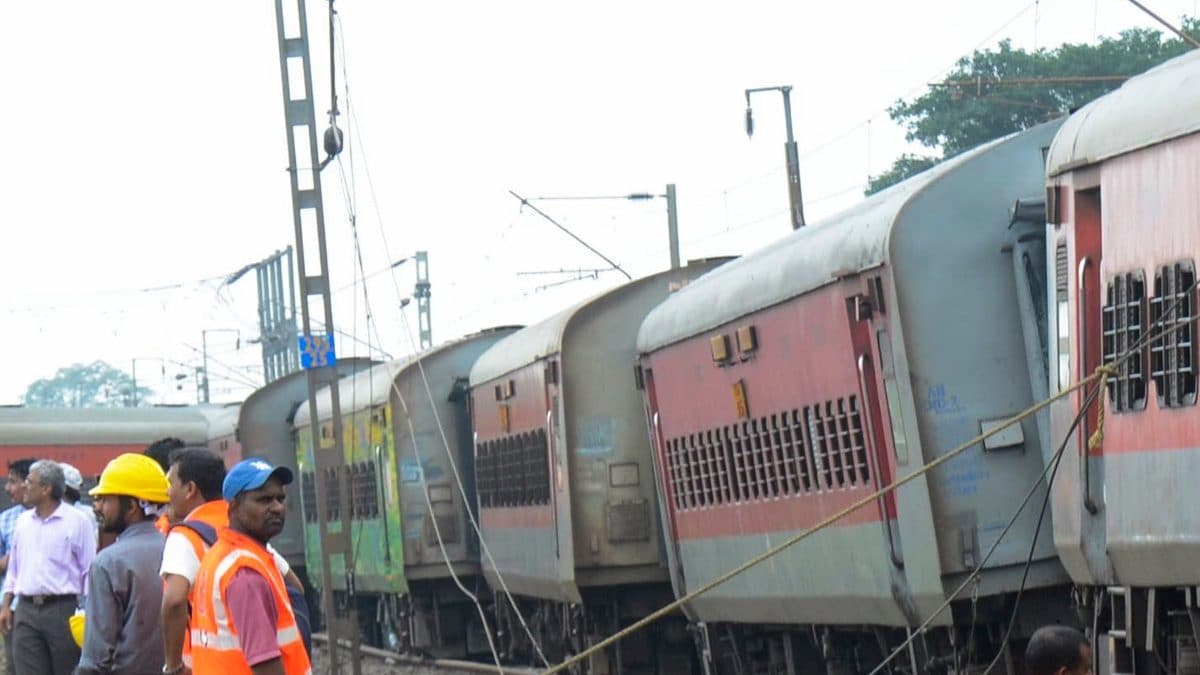The derailment of the Mysuru-Darbhanga Bagmati Express (Train No. 12578) on Friday night near Chennai was a tragic incident that thankfully resulted in no fatalities. While initial reports suggested a potential for sabotage or terrorism, investigations by the National Investigation Agency (NIA) have concluded that the cause was likely a technical failure. The accident highlights the importance of maintaining stringent safety standards in the Indian railway system and the need to thoroughly investigate such incidents to prevent future occurrences.
Technical Malfunction as the Primary Cause
The NIA’s thorough investigation into the incident has ruled out any terror angle or sabotage. Their findings suggest that the derailment was most likely caused by a technical malfunction. The fact that the passenger train entered the loop line despite having a green signal for the main line indicates a possible issue with the signaling system or a failure in communication between the driver and the control room. Further investigation will be needed to determine the exact nature of the technical malfunction that led to this tragic accident.
Importance of Rigorous Safety Protocols
The incident serves as a stark reminder of the importance of robust safety protocols in the Indian railway system. The fact that a passenger train ended up on the wrong track despite having signals for the main line highlights potential vulnerabilities within the system. While Indian Railways has implemented many safety measures in recent years, this incident demonstrates that continuous improvements and rigorous adherence to existing protocols are crucial.
Investigation Process and Role of the NIA
The NIA’s involvement in the investigation was part of their standard operating procedure, aimed at ensuring a comprehensive examination of all possibilities. While their findings pointed towards a technical failure, the agency played a critical role in ensuring that no other factors, including terrorism or sabotage, were contributing to the incident. Their involvement helped maintain transparency and confidence in the investigative process.
Impact of the Derailment
The derailment caused significant damage to both trains and disrupted rail services in the area. The Chennai-Gudur section, where the accident occurred, is a key railway line with considerable passenger and freight traffic. The diversion of several trains due to the accident disrupted schedules and inconvenienced passengers. This incident underscores the widespread impact of railway accidents on the transportation system and the economy.
Addressing Safety Concerns
In the aftermath of this incident, addressing the identified safety concerns should be a top priority. The railway authorities need to conduct a thorough investigation to determine the root cause of the technical failure and implement necessary corrective measures to prevent similar incidents in the future. This includes enhancing signaling systems, improving communication protocols, and strengthening the overall safety framework.
Public Response and Trust
The public response to the incident reflects the ongoing concern over railway safety in India. The incident has sparked public debate about the need for increased investments in infrastructure, technology, and safety training to prevent future accidents. Rebuilding public trust in the railway system requires a demonstrable commitment to improving safety standards and transparency in incident investigations.
Key Takeaways
This incident serves as a stark reminder of the potential dangers of railway accidents and the importance of continuous improvements in safety protocols. Key takeaways from the investigation include:
- Technical malfunctions: The most likely cause of the derailment was a technical failure, highlighting the importance of rigorous maintenance and inspection of railway infrastructure.
- Robust safety procedures: The need for enhanced safety protocols, including comprehensive training for staff, accurate signal systems, and effective communication between the driver and control room is evident.
- Transparency in investigations: Public trust in the railway system is crucial. Transparent investigations by agencies like the NIA are essential to build confidence in the safety of the system.
- Investment in infrastructure: Continued investment in railway infrastructure is crucial for enhancing safety and preventing future accidents.
- Lessons learned: This incident should serve as a catalyst for the Indian Railways to proactively identify and address safety concerns and strengthen their commitment to improving safety for passengers and employees.




